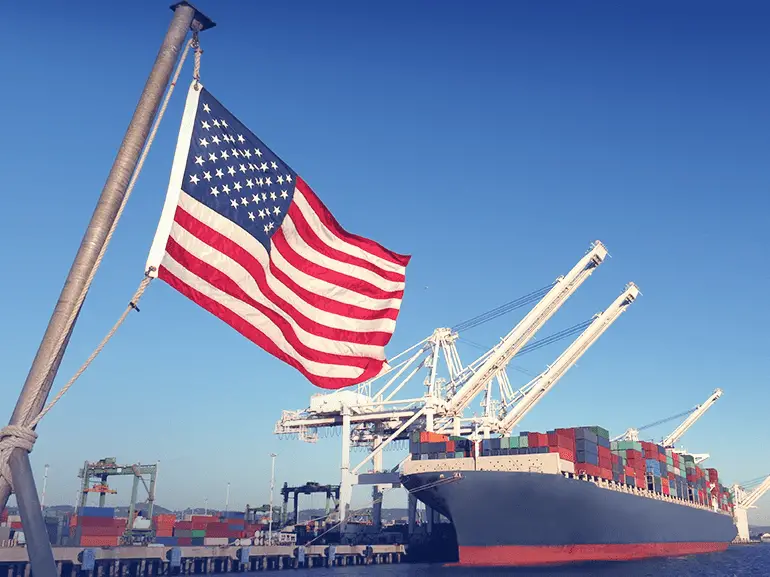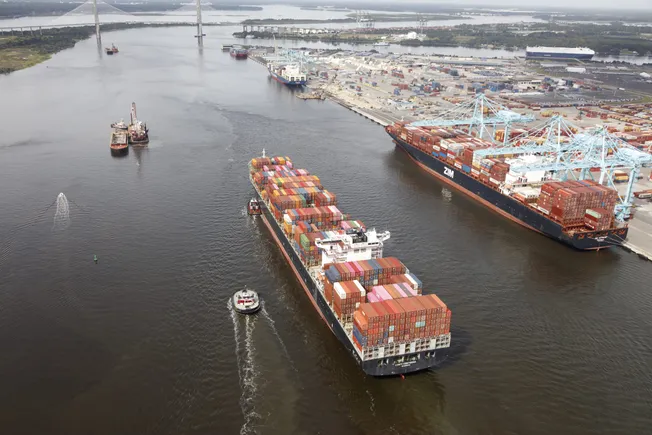Historic U.S. Port Strike: The Global Ripple Effect on Supply Chains
A historic dockworker strike at U.S. East and Gulf Coast seaports could severely disrupt global supply chains, leading to product shortages and economic instability.
Introduction
A massive dockworker strike is currently unfolding across U.S. East and Gulf Coast seaports, and its implications could be monumental for global supply chains. With the potential to disrupt the movement of billions of dollars’ worth of cargo, this historic strike is already making waves across multiple industries. From auto manufacturing to pharmaceuticals, sectors that rely on a steady flow of goods may face significant delays. As the strike stretches into days and potentially weeks, its cascading effects on the economy are becoming increasingly clear.
The Beginning of a Historic Strike
On October 1, 2024, workers at 14 major ports stretching from Maine to Texas went on strike, marking the first action of this scale by the International Longshoremen’s Association (ILA) in nearly half a century. The ILA represents around 45,000 dockworkers, and their decision to walk out has thrown the global shipping industry into disarray. The crux of the dispute revolves around demands for better wages and the contentious issue of automation.
The breakdown in negotiations between the ILA and the United States Maritime Alliance (USMX) employer group just before a critical September 30 deadline set the stage for the strike. As containers stack up and ships wait at sea, the disruption could have a far-reaching impact beyond U.S. borders.
Widespread Economic Disruption
The strike threatens to amplify supply chain disruptions already triggered by recent global events. Earlier this year, conflicts in the Red Sea, a severe drought impacting the Panama Canal, and the collapse of the Baltimore bridge all added pressure to ocean freight channels. The additional strain of a port strike could stretch global supply chains to the breaking point.
As Peter Sand, chief analyst at Xeneta, an ocean freight rate intelligence platform, remarked, “The stakes could not be higher.” Sand emphasized the critical role that U.S. East and Gulf Coast ports play in global shipping, handling over 40% of all containerized goods entering the United States. If the strike endures for an extended period, the resulting economic fallout could reverberate across multiple continents.
The Ripple Effect on Global Supply Chains
Even a brief disruption of a few days could significantly affect industries that depend on timely deliveries, such as pharmaceuticals, automotive production, and manufacturing. As Lisa DeNight, managing director of national industrial research at Newmark, explains, the longer the strike lasts, the more profound the impact. “The unpredictability of this issue here is really in play, and it has the magnitude to really throw a giant wrench in global supply chains,” DeNight said.
According to DeNight, a short strike might result in minor delays, but a prolonged strike would create a “cascade effect” that impacts multiple industries, from shipping delays to product shortages on store shelves. For American consumers, this could mean facing empty shelves for everyday goods, especially perishables like bananas and other fresh fruits.
Past Supply Chain Crises and Present Tensions
This strike is far from the first time the global supply chain has been tested in recent years. Ongoing geopolitical tensions, natural disasters, and infrastructure failures have exposed the vulnerabilities of international trade routes. The conflict in the Red Sea earlier this year slowed down shipping lanes, while a severe drought in the Panama Canal caused further bottlenecks in ocean traffic. Additionally, the Baltimore bridge collapse compounded difficulties for logistics firms relying on smooth land-based freight movements.
Given these preexisting challenges, Sand warned that the U.S. port strike couldn’t have come at a worse time. The disruption will first affect ships queuing outside East and Gulf Coast ports, delaying their next outbound journeys. As a result, vessels departing from Europe, the Mediterranean, and eventually Asia will be delayed, creating a global domino effect. This timing is particularly crucial, as it coincides with the prelude to the Chinese New Year, typically a mini-peak in global shipping activity.
Maersk’s Warning: A Long Recovery Period
Global shipping giant Maersk has expressed serious concerns about the long-term ramifications of the strike. Even if the work stoppage lasts just one week, the company warns that it could take up to six weeks for operations to fully recover. Maersk predicts significant backlogs and rising costs for companies reliant on U.S. East and Gulf Coast ports. The delays will worsen as time passes, and if the labor dispute stretches out, businesses may face even higher logistical hurdles and costs.
The potential disruption to the supply chain could compound challenges for industries already grappling with inflation and other economic pressures. For firms that rely on just-in-time inventory systems, this strike might force them to adjust their operations, leading to increased prices for consumers and shortages of key goods.
Political Implications and Potential Government Intervention
With the 2024 U.S. presidential election looming, the strike also has political ramifications. Some experts, such as Bradley Saunders, North America economist at Capital Economics, believe that despite earlier denials, President Joe Biden may be forced to intervene. Saunders has suggested that Biden might invoke back-to-work legislation under the Taft-Hartley Act to prevent further damage to the economy.
Passed in 1947, the Taft-Hartley Act grants the U.S. president the power to suspend a strike for an 80-day “cooling-off period” if it is deemed to endanger national health or safety. However, Biden has so far indicated that he will not use this legal authority to force union workers back to the job. If the strike continues to cause disruptions, it could become a major political issue in the weeks leading up to the election.
The Perfect Storm for Supply Chains?
The current strike adds to a growing list of crises that have shaken supply chains in recent years. Peter Sand aptly described the situation as a “perfect storm,” with multiple factors converging to heighten the risks for global trade. For the ILA, however, this timing presents an ideal opportunity to pressure employers during negotiations, especially as the economy braces for further instability.
Firms that rely on imports are expected to experience the most immediate effects of the strike. Maersk has already highlighted the risk to temperature-controlled goods, which include critical food supplies. American consumers may soon see shortages of fresh produce, while industries dependent on raw materials for manufacturing could face delays in production.
Conclusion: A Fragile Supply Chain at a Crossroads
As the strike progresses, the global economy finds itself at a critical juncture. Supply chains are already fragile, and any additional disruption risks further destabilizing international trade. Companies that depend on timely deliveries for production or retail may face difficult choices, including raising prices or reducing stock levels.
While the outcome of the strike remains uncertain, one thing is clear: the global supply chain’s fragility has been exposed once again. Businesses around the world will need to prepare for continued uncertainty as the ripple effects of this historic strike unfold.



